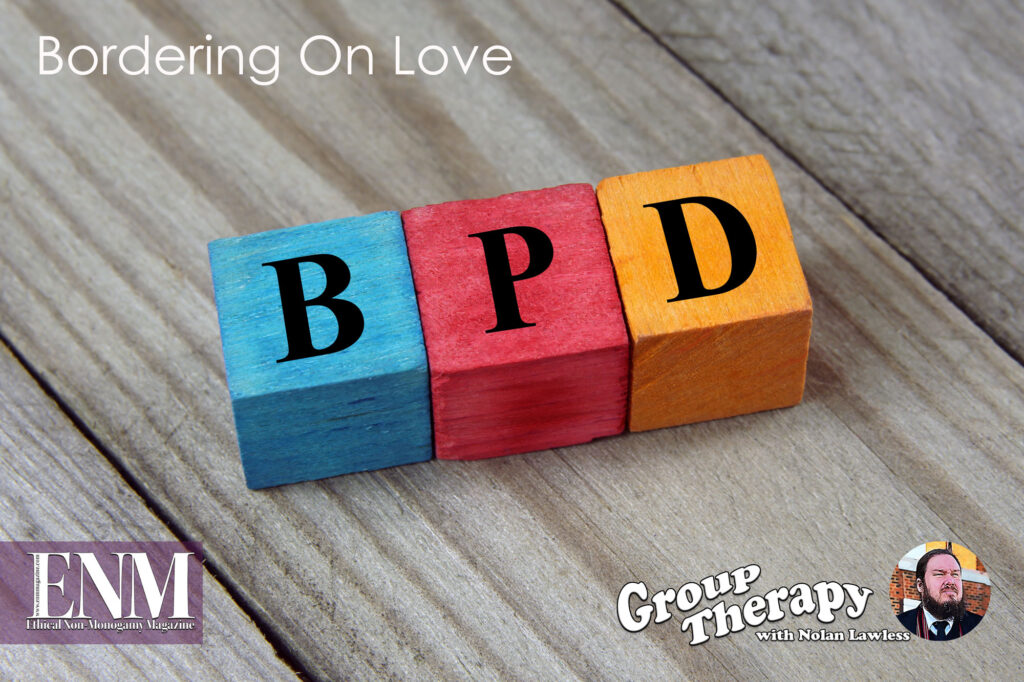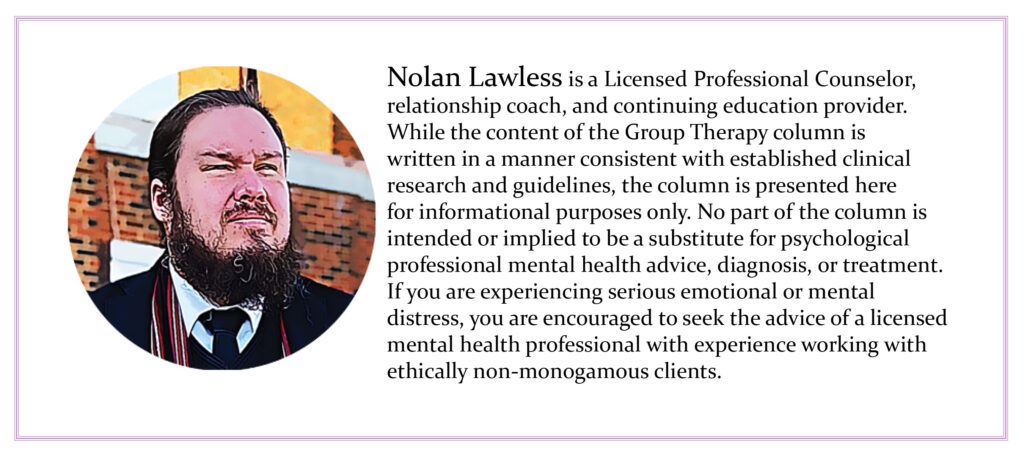
If you, like me, are a fan of musical comedy featuring surprisingly nuanced portrayals of mental illness and interpersonal dynamics (surely it’s not just me, right?), you might have caught the CW show Crazy Ex-Girlfriend. In the series, the main character quits her job and relocates across the country in pursuit of a childhood boyfriend while also trying to build friendships and even romantic relationships with others, with mixed degrees of success. Alternating between sweetly romantic and cringe-inducing, the series showcased relationships full of emotional intensity but lacking in stability. The series was ultimately a fairly accurate representation of an often misunderstood mental illness: Borderline Personality Disorder.
Borderline Personality Disorder, or BPD, is primarily a disorder of emotions, and those who are affected by this condition report experiencing emotional states that are intense, rapidly changing, and often very difficult to control and regulate. Small, seemingly insignificant changes in circumstance can trigger intense feelings of anger, anxiety, and depression, and it can be difficult for people with BPD to return to a stable emotional baseline afterwards. These rapid and sometimes unpredictable changes can lead to an unstable self-concept and trouble integrating into organizations, communities, and relationships.
Those who are diagnosed with BPD may experience a wide variety of symptoms related to the disorder, but one of the most common is an intense fear of abandonment. Interpersonal relationships are viewed as critically important and tend to move quickly, often characterized by very intense positive feelings and statements. However, This rejection avoidance generally manifests either in cutting off communication to prevent the rejection from occurring (such as ghosting), or in coercion or threats to delay or reverse the rejection (such as stalking). The irony, of course, is that these actions often hasten, or outright cause, the end of a relationship that may have been otherwise stable and satisfying.
The underlying causes of BPD are not well understood, but there are some common factors. The disorder seems to run in families, although it is not yet known whether this is due to a genetic predisposition or due to the effects of being raised by a parent who struggled to connect with their children. Research has shown that those with BPD do have several neurological factors in common, including inconsistent levels of serotonin and underdevelopment of portions of the brain that help to regulate anxiety, self-control, and decision making. There is also a high percentage of those diagnosed with BPD who also suffered significant childhood trauma, including neglect and emotional, physical, or sexual abuse. Many researchers hypothesize that BPD may be a learned response to this trauma, an extended defense mechanism against rejection and abuse
For those who are regular readers of Group Therapy, you might remember October’s column about attachment theory and think “this sounds a whole lot like insecure attachment.” Insecure attachment is generally broken down into three types: avoidant, anxious, and fearful. People with a primarily avoidant attachment style view themselves positively and others negatively, those with an anxious style generally view others positively and themselves negatively, and those with a fearful style view both themselves and others through a negative lens. Research shows that the majority of those with BPD have either fearful or mixed fearful/anxious attachments in their interpersonal relationships, which shows two important things: first, that those with BPD almost universally view themselves in a negative light, and second, that the fear of losing the relationship drives attachment more than the desire to have the relationship.
As you might imagine, this mixture of codependency and fear of rejection can wreak havoc on relationships. Boundaries are often seen, consciously or unconsciously, as obstacles to connection, things to be negotiated, ignored, or overrun. Sometimes partners are deliberately tested, their buttons pushed, to confirm that they won’t leave even when pressured. A partner who passes these tests is viewed as perfect, idealized, a soul mate and life partner. Failing a test, however, may mean that the partner not only no longer loves them, but in fact never loved them, because BPD can rewrite memories of emotions just as easily as it can change emotional states in the present. Perhaps most frustrating, this sudden shift from a partner doing no wrong to doing no right may not be connected to anything the partner did at all.
In spite of all of these difficulties, people diagnosed with BPD can, and often do, have satisfying, long term relationships. Because the disorder is so heavily based on fear of abandonment and rejection, building and maintaining honest, open, and thorough communication is key. For a partner who is diagnosed with BPD, being willing to check perceptions and address fears, both with partners and with professionals or support groups, will help stabilize the swings of black and white thinking. For those with partners with BPD, active listening and giving full attention to conversations and shared time will help combat fears of unimportance. When swings do happen, or when negative perceptions come out, it is important for all partners to remember that, no matter how painful the words may be, they are a symptom of an illness, not a reflection of the relationship.
BPD can be extraordinarily stressful, both on the person diagnosed and on their partners, so having strong, healthy support systems is key. In this way, non-monogamy offers a significant advantage. Because BPD is connected to a negative perception of both self and others, having external support to reassure all partners that they are valuable and deserving of love can be critical for relationship success. For partners with BPD, having multiple partners can both provide more opportunities for meaningful emotional connection and reduce the negative psychological impact of any one relationship struggling at a given moment. It is easier to combat negative self-talk when hearing positive things from multiple people! For those who have partners with BPD, having multiple partners can help combat emotional burnout and provide reassurance that the negative things said during mood swings are not accurate. Being listened to and cared about by others helps us to recharge emotionally and prepare us to build and rebuild connections with our partners.
As I mentioned earlier, boundaries and BPD do not mix well together. As a result, those with BPD will often try to test and ultimately overrun interpersonal boundaries in relationships. As a result, setting healthy boundaries and addressing violations is both difficult and highly beneficial. Having boundaries that are clearly outlined helps combat the codependency that frequently accompanies BPD; setting boundaries is (somewhat counterintuitively) most important for the partner diagnosed with BPD, because the process of setting them helps to reinforce, not only that they are an independent person who has their own wants and needs, but also that their wants and needs are valuable enough that their partners should know and respect them. Addressing boundary violations is also important, because working towards a collaborative solution instead of enforcing a rule helps combat both us vs. them thinking and the black and white worldview that is the hallmark of BPD.
While not every relationship involving BPD features snappy musical numbers and wisecracking sidekicks, they do all involve highly intense emotions, lots of communication, and sometimes a lot of pain. Those diagnosed with BPD have one of the highest suicide rates of any group, and many struggle to maintain healthy, meaningful relationships with others. However, the community, communication skills, and emphasis on personal autonomy and responsibility that comes with ethical non-monogamy, along with appropriate professional support, can help to give people suffering from BPD what they ultimately need the most: relationships built on love and understanding, where they are valued and respected as individuals, and where they can find acceptance and connection. Flash mobs are, of course, optional.



Comments are closed